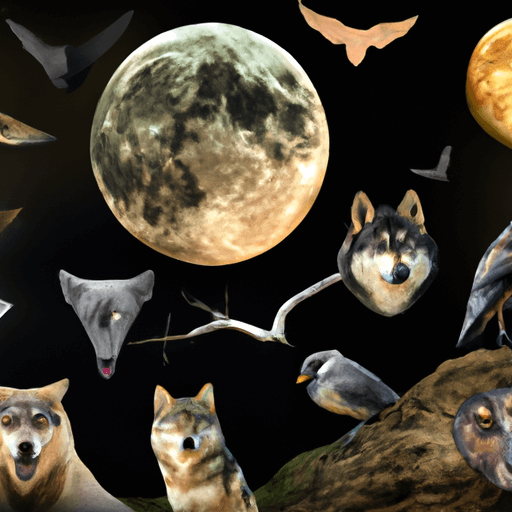The Intricate Dance Between the Moon and Wildlife Behavior
In this article, we embark on a fascinating journey into the intricate relationship between Earth's natural satellite, the Moon, and the behavior of wildlife. There are many aspects of life that the Moon influences, with wildlife behavior being a widely studied but often underestimated one.
Diurnal and Nocturnal Wildlife Activities
Nature has orchestrated an elegant balance between day and night wildlife activities. Many nocturnal creatures, like owls and bats, rely heavily on moonlight to source food, mate and survive. Similarly, diurnal animals adjust their routines depending on the moon's position and brightness. Observing changing behavioral patterns and understanding their correlation to the lunar cycle opens up interesting insights into the world of these creatures.
Influence on Reproduction Habits
The lunar cycle can significantly influence the reproductive behavior of several species. For example, studies show that marine turtles prefer full moon nights for nesting because the higher tides make beach access easier.
Hunting Strategies and the Moon
There is ample evidence that predators like lions and wolves modify their hunting strategies based on the moon's phase. For some, the full moon's brightness aids spotting prey from a distance; for others, the new moon's obscurity enables a stealthy approach.
Migration Patterns
The moon's influence extends to migration patterns as well, with certain species of birds seen to time their migrations in sync with the lunar cycle. For instance, the Bar-tailed Godwit is known to start its remarkable journey from Alaska to New Zealand around the full moon.
Studies and Examples
Primary research and studies from different parts of the world strongly support the influence of lunar phases on wildlife behavior. Real-life examples provide compelling proof of the Moon’s shimmering sway over Earth’s creatures.
The Incredible Interconnectivity of Nature
Further insight into the connection between the lunar phases and wildlife behavior can highlight the incredible interconnectivity of nature. Through understanding, we foster respect, and through respect, we move closer to coexistence and conservation.
Conclusion
As we've explored, the Moon's gravitational pull, the rhythm of its phases, and its luminary influence interweave in the dance of life on Earth. The next time you gaze up at that celestial companion of ours, remember—you are witnessing a cosmic ballet that continues to shape and guide life as we know it.
















Comments
Leave a Comment